Non-Cancerous (Benign) Treatments
Radiation Treatment at Oncology Nevada
Benign Diseases treated with radiation therapy include:
- Dupuytren’s (Palmar and Plantar fibromatosis)
- Ledderhose (Palmar and Plantar fibromatosis)
- Plantar fasciitis
- Arthritis
- Bursitis
- Tennis Elbow/Golfer’s Elbow
- Keloids and Hypertrophic Scars
- Trigeminal Neuralgia
- Acoustic Neuroma
- Peyronie’s
- Graves Ophthalmolopathy
- Meningioma
- Sialorrhea
- Pituitary Adenoma
- Arteriovenous malformations (AVMs)
Common Benign Diseases Treated with Low-dose Radiation Therapy
Dupuytren’s Contracture
“The International Dupuytren Society considers radiotherapy as a very effective, if not the only, means to stop Dupuytren’s disease in an early stage and to possibly avoid later surgery.”
There is Phase III clinical trial data to show superiority of low-dose radiation therapy over observation (Seegenschmeidt et al, PMID 11172962).
Patients appropriate for radiation therapy include those with nodules only or less than 10 degrees of contracture. Patients with more advanced disease can receive radiation therapy after a corrective procedure such as surgery or Xiaflex in order to prevent re-contracture.
In a study covering 13 years of follow-up, Betz et al. observed only minor side effect including skin atrophy and skin peeling for 32% of the patients. No radiation burns were observed.
“No single case of cancer caused by radiation has ever been reported after the use of RT for Ledderhose, Dupuytren’s, Keloids, hypertrophic scars, or other benign hyperproliferative disorders” which had been a theoretical concern.
Nevada Oncology is the only clinic in Northern Nevada to be certified by the International Dupuytren’s Society.
DDSG – Dupuytren’s Disease Support Group
DART – Dupuytren’s Advocates for Radiation Therapy
Dr. Guy Jones is actively involved in supporting patients with Dupuytren’s, Ledderhose, and Peyronie’s Diseases and serves as a forum expert physician on the Dupuytren’s Advocates for Radiation Therapy (DART).
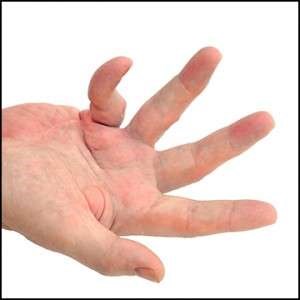
Ledderhose Disease
Ledderhose Disease (also known as Plantar fibromatosis) is a condition very similar to Dupuytren’s disease, but occurs on the soles of the feet. The disease is characterized by the growth or nodules which may slowly spread along the inner portion of the bottom of the foot.
Patients may report feeling as if their sock is bunched up in their shoe or have a feeling of walking on rocks. As the disease progresses, it can become painful, leading to patients forgoing activities such as running or walking.
As with Dupuytren’s disease, Ledderhose is very responsive to radiation therapy. Nodules typically soften and shrink, allowing for increased function and mobility.

Before treatment.
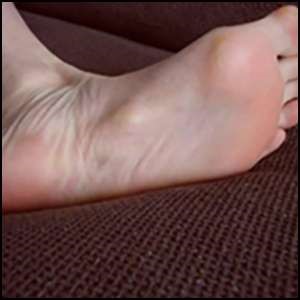
After treatment.
Keloids and Hypertrophic Scars
Keloidectomy followed immediately by a low dose of radiation consistently decreases recurrence of keloids to only <15% (PMID: 26430630, 26224888, 26137265, 25907802).
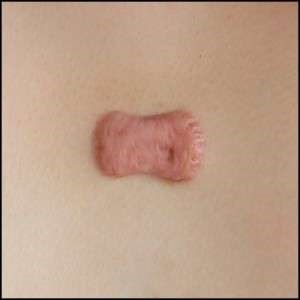
Planter Fasciitis
Very low doses of X-ray therapy to the heel and other painful areas of the foot have been shown to decrease the pain associated with painful heel spurs with minimal side effects (PMID 26281833).
Treatment involves 6 total visits to the clinic then to the foot twice per week for 3 weeks. The treatment is completely painless with no reported side effects due to its low dose.
In large studies, 83% of patients reported significant pain relief by 6 weeks after the treatment and over half report complete resolution of pain. Pain relief lasts an average of 72 months (Miszczyk, et al. TBIR, 2014). Compared with steroid injection, radiation therapy was shown to be superior in both effectiveness of treatment and duration (Canyilmaz, et al. IJRO, 2015).
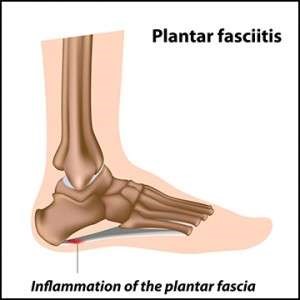
Bursitis
Bursitis is a painful disorder involving inflammation of bursa (fluid-filled sacs) used to cushion joints, including in the hip and shoulder. This condition can happen to anyone regardless of age of activity, but is more common in elderly patients and athletes. Bursitis can also be associated with arthritis and other conditions.
For patients who do not respond well to medications or other procedures, low-dose X–ray therapy is an option that involves 6-10 painless treatments. In studies involving thousands of patients, there was an 88% response rate with only very minor reported side effects (Biete et al, Ann Radiat Ther Oncol. 2017; 1(1): 1003)
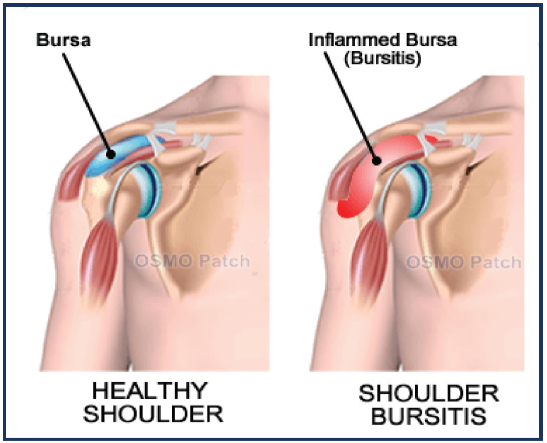
Arthritis
Arthritis is a broad term describing the swelling and tenderness of joints. The primary symptoms are pain and stiffness in the afflicted joint which worsens over time and can have varying levels of severity. The most common types of arthritis are osteoarthritis, caused by repetitive stress, and rheumatoid arthritis, caused by your body’s immune system mistakenly attacking your joints. Arthritis can be agonizing and is a leading cause of disability in the United States affecting over 50 million adults.
For patients that do not respond well to medications or other procedures, low-dose X–ray therapy is an option that involves 6-10 painless treatments and has been used extensively around the world for many years. It has recently become more common in the United States for relieving arthritic pain. This form of radiation therapy is painless and non-invasive, thus making it an ideal option for elderly patients who cannot tolerate surgery
Worldwide, thousands of patients are treated each year and experience significant pain relief using low-dose x-ray therapy. A scientific review in 2019 looked at outcomes from over 5000 patients who received low-dose x-ray therapy for arthritis and showed that approximately 85% of patients experienced pain relief.
Ott et al (Strahlenther Onkol 195, 285–288, 2019) and Calabrese, et al (Hum Exp Toxicol. 2019;38(8):888-898.
doi:10.1177/0960327119846925)
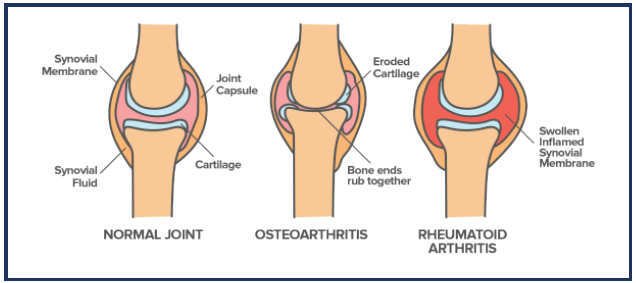
Epicondylitis (Tennis elbow/Golfer’s elbow)
Epicondylitis is a condition to plantar fasciitis but occurs in the elbow instead of the feet. Low doses of X-ray therapy to the elbow have been shown to decrease the pain associated with epicondylitis with minimal side effects.
Treatment involves 6 total visits to the clinic ven to the foot twice per week for 3 weeks. The treatment is completely painless with no reported side effects due to its low dose.
A study of 2,000 patients with medial or lateral epicondylitis treated with radiation also demonstrated highly effective pain control. (Ott et al, Strahlenther Onkol, 2012).
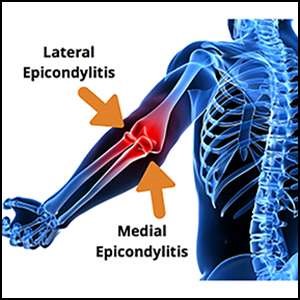
Acoustic Neuroma/Vestibular Schwannoma
Both stereotactic radiosurgery (SRS) and standard fractionated radiation demonstrate very favorable outcomes in the management of acoustic neuroma/vestibular schwannoma. Generally, radiation therapy is preferred in cases where patients have hearing function as it results in excellent hearing preservation rates.
Karpinos, et al (Int J Radiat Oncol Biol Phys. 54:1410-21) And Meijer, et al (Int J Radiat Oncol Biol Phys. 56:1390-6).
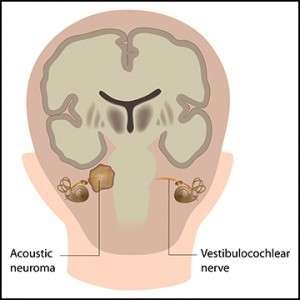
AV-Malformations
Stereotactic radiosurgery (SRS) for arteriovenous malformations may be used in cases where surgery is considered too risky such as an inaccessible location or expected high morbidity due to location, large size, or medically inoperability. The goal of SRS is to eliminate or reduce the risk of catastrophic hemorrhage. It can take 2 or more years for full destructive effect and the risk for hemorrhage is reduced during this time. Durable control rates after 2 years for lesions <3cm are 80-90%. Wang, et al (Cerebrovasc Dis. 37:342-9). And Dalyai, et al (Biomed Res Int. 2014:306518).
Maruyama, et al (N Engl J Med. 352:146-53).

Photo courtesy of the National Institute of Health.
Sialorrhea
Up to 80% of patients with Parkinson disease and 30% of patients with ALS suffer from sialorrhea, or excessive salivation. Patients who fail conservative medical management can be considered for 1-4 fractions of radiation therapy with studies reporting 80-95% improvement in patient reported symptomatic outcomes.
Hawkey, et al (Laryngoscope. 126:80-5), Slade, et al (J Neurol Sci. 352:34-6), and Assouline, et al (Int J Radiat Oncol Biol Phys. 88:589-95).
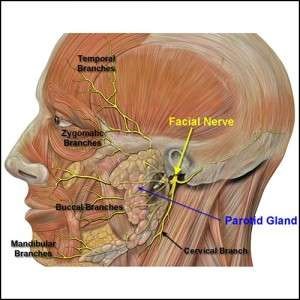
Photo courtesy of the National Institute of Health.



